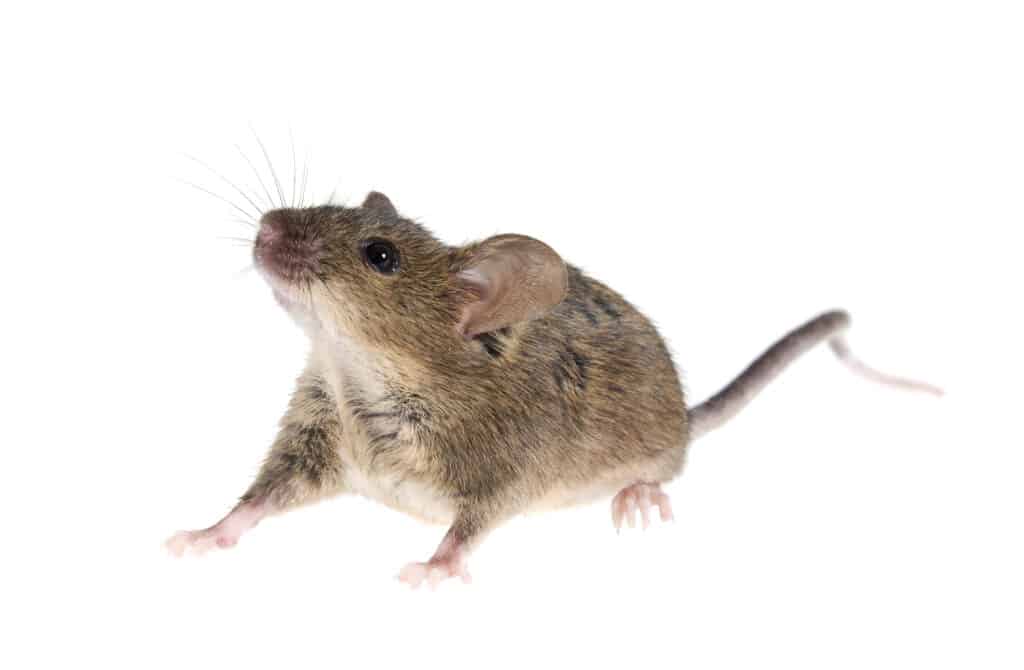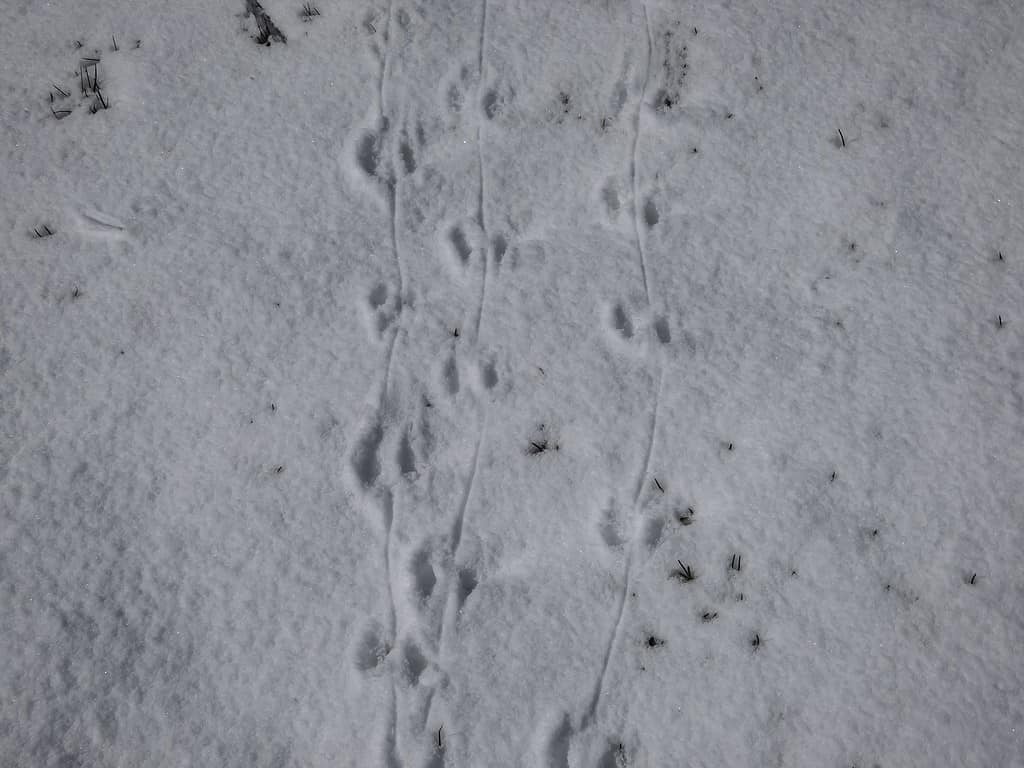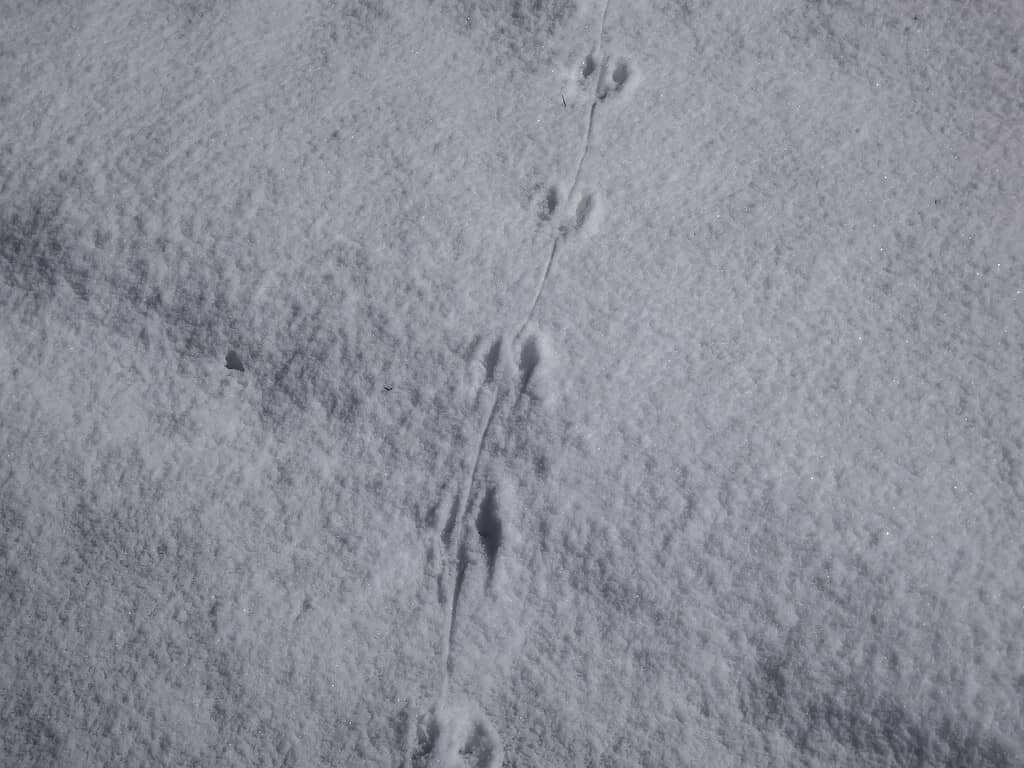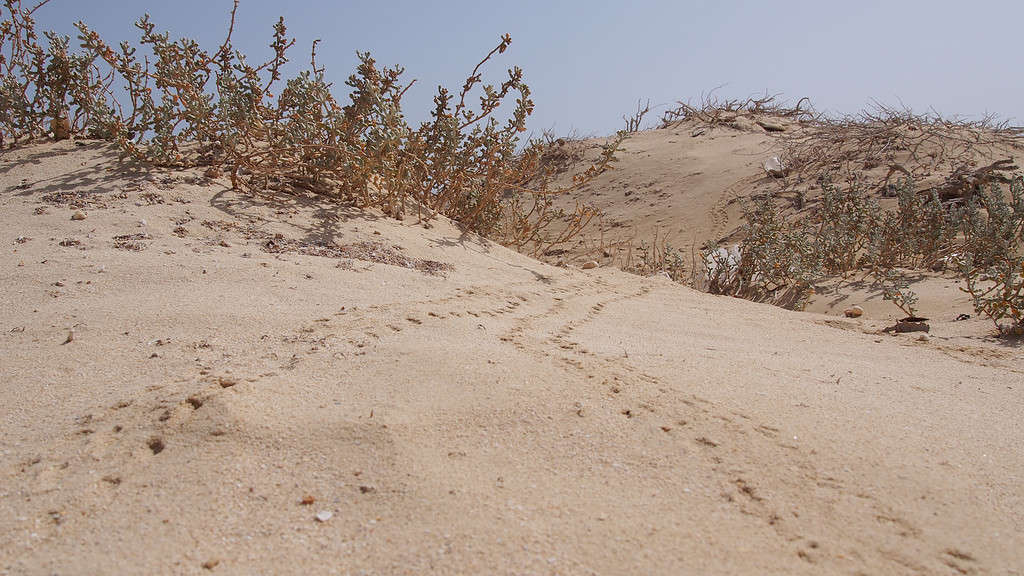Humans have walked alongside mice since the beginning of our existence. Ancient Egyptians used mongooses to catch invasive mice, and stone age farmers battled mice over 4,000 years ago. These creatures have been considered pests for centuries. All this to say, you are not alone if you need help identifying mouse tracks on your property.
It may not seem like much to have a mouse scurrying around, but these small rodents can cause structural damage from their nest-building and chewing activities. They can also cause health problems by contaminating food and leaving their urine and droppings behind. Check out this identification guide for mouse tracks, including how they differ across snow, mud, and more.
Mouse Overview

Mice are most active after sunset and before sunrise. If you spot one during the day, you may have an infestation.
©IrinaK/Shutterstock.com
Mice are small rodents with long tails, rounded ears, and a pointed snout. And “mouse” is actually a general term for many species. In fact, there are over 70 species of mice and rats just in North America; and even more subspecies. But, thankfully, most of their footprints look very similar.
Mice are nocturnal creatures, meaning they are most active after sunset and before sunrise. However, you may occasionally spot one during the day. But this is often bad news for you. Seeing mice during daylight hours often indicates an infestation. And having a solitary mouse on your property is pretty rare. Chances are if you see one, there are more. Sometimes a lot more.
Mouse Distribution
Some of the most common species in the country include deer mice, house mice, and white-footed mice. Deer mice can be found from Canada through to Mexico. They are abundant in the United States but are absent from the Southeast. House mice, however, live in every state in the country, including Southern Canada and Alaskan coastal areas. And white-footed mice are common in the Eastern United States and Mexico.
Mice can live in many habitats, such as grasslands and forests. But they often nest near manmade structures, which can cause problems for property owners.
How Do You Know If You Have a Mouse on Your Property?
Mice may seem innocent enough, but they can cause major problems. They chew on insulation, wood, furniture, and other material. And they can contaminate food and carry diseases.
Here are some signs you have a mouse problem:
- Hearing scratching noises
- Strong unpleasant smell
- Dark smudges along baseboards
- Teeth marks on items
- Damage to property
- Footprints
Identification Guide For Mouse Tracks
Now that you know what signs to look for, check out this guide for identifying mouse tracks.
Mouse Paw Morphology
| Characteristic | Description |
|---|---|
| Size | White-footed mice – ½ to one inch in length and width House mice – less than ½ inch Deer mice – ⅛ to ¼ inch |
| Shape | Elongated with clear digit indentation |
| Features | The front feet have four toes, and the hind has five. Long tail impression, often creating a trail |
| Claws | They do have claws, but they may or may not be visible. |

The most telling sign of a mouse track is the tail line.
©Kristine Rad/Shutterstock.com
Mice create small footprints because they are small creatures. While their tracks can range, they are often between ⅛ inch to one inch in length, with white-footed mice making the larger of the prints. Their feet are elongated, and the digits can clearly be seen. They have claws, but they are usually not visible. Four digits are featured on their front feet, while five toes are on their hind. But the most telling sign of a mouse track is the tail. Their long tails create a distinct trail as the animal moves across the surface.
Mouse Tracks in Snow, Mud, and More

These creatures tend to jump through the snow, leaving tail lines trailing behind them.
©Kristine Rad/Shutterstock.com
While you can find mouse tracks anywhere on your property, you are more likely to spot them where they traverse the most. Since they don’t stray far from their nests, you will find them in close proximity. And they like to take the same routes to find food, which also happens to be along edges. If you are looking for their tracks outside, you can find them along the edge of a building.
Hind feet mouse tracks are often side-by-side. And the front feet will be slightly misaligned. Their front paws will also be wider and the hind paws narrower.

Hind feet mouse tracks are often side-by-side. And the front feet will be slightly misaligned.
©Denis Marec/Shutterstock.com
You can spot mouse prints in the snow, mud, sand, dirt, and powder. Mud and sand are relatively easy to identify, as they mold around the feet, leaving a distinct impression. Snow can be a little more difficult depending on the depth. Because they only weigh less than a pound, their bodies are not heavy enough to push their prints down into deep snow. But a light dusting might produce good, clear prints. You may also be able to see the tail trail in light snow. Mouse tracks in deep snow can look different than in light snow or mud. These creatures tend to jump through the snow, leaving lines trailing behind them. The trail can also lead to a small hole in the snow where they burrow.
If you have an infestation on your property, you may see a lot of activity within the same area. And if it’s muddy or snowy, you can get slush, which is difficult to decipher. And it’s also not a good sign.
Thank you for reading! Have some feedback for us? Contact the AZ Animals editorial team.








